THE CHAIN OF WATCH AND COASTAL TOWERS OF THE MALTESE ISLANDS
When the Hospitallers arrived in Malta in 1530, the northern half of the Island, being mostly uninhabited, was the most vulnerable to piratical incursions. This area was overlooked by the heights of the great natural fault which runs from one end of the island to the other. The nearest casale was that of Naxxar, on whose inhabitants obviously fell the burden of maintain a watch for corsairs and also the brunt of many of the incursion. Grand Master Jean Claude de Valette tried to take over Torre Gauci, which was built by Francesco Gauci in 1548 to protect his family and property from corsair incursions.
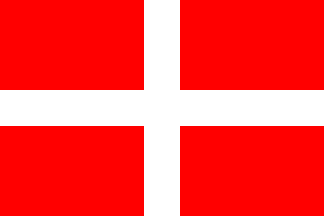
The Standard of the Religion as it was known the Flag of the Order of St. John.

Torre del Capitano is very similar to the Gauci Tower. It is also similar to the coastal towers built by the Order of St. John in Rhodes and the nearby islands during the previous century.
they did not build towers.
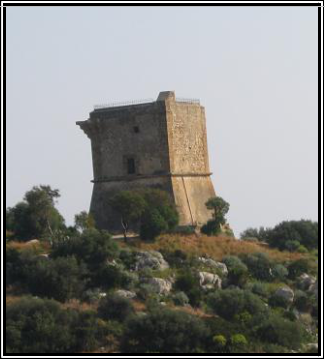
Scopello Tower in Sicily. This tower was built between the towns of San Vito and Castelmare in eastern Sicily.
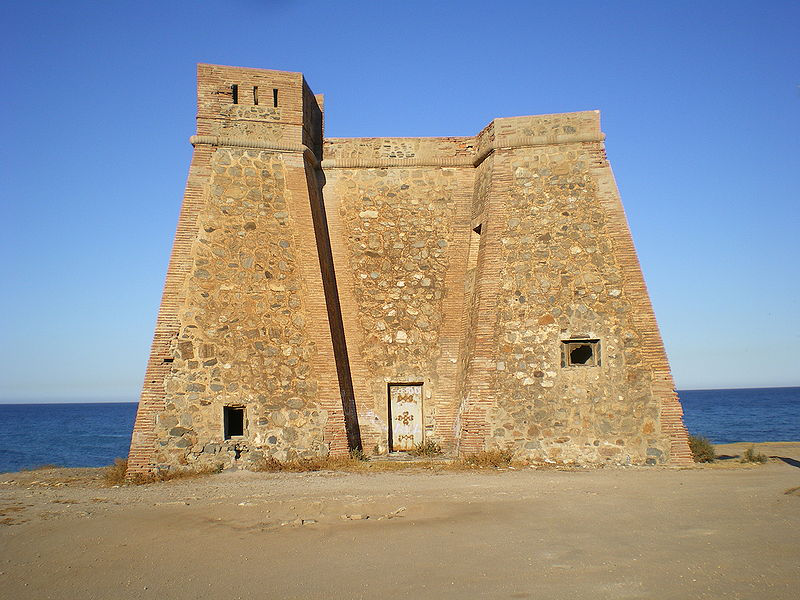
Torre de Macenas, Almeria in Spain. Note the bastioned corners similar to the large towers or fortini built in Malta by Grand Masters Wignacourt and Lascaris.
Therefore, after the unsuccessful attempt to take this tower, the Knights built a new tower, the Torre del Capitano which is very similar to the Gauci Tower. It is also similar to the coastal towers built by the Order of St. John in Rhodes and the nearby islands during the previous century. However, the Hospitallers took around seventy years to start building a chain of coastal towers to defend the shores of the Maltese Islands. We have to bear in mind that during this period the most important type of coastal fortification was the tower. In fact many of the Mediterranean countries of this period built systems of coastal towers.
The system of coastal towers was developed more technically by the Spaniards, in Spain and their colonial possessions. Until 1567, in Naples, Pietro de Toledo, the Spanish viceroy, built some 313 coastal towers throughout the Neapolitan kingdom. In Sicily Ferrante Gonzaga, the Spanish viceroy built from 1535 and 1543 some 137 coastal towers. The Spanish began refortifying their possessions because they found them too weak to resist any Turkish assault.
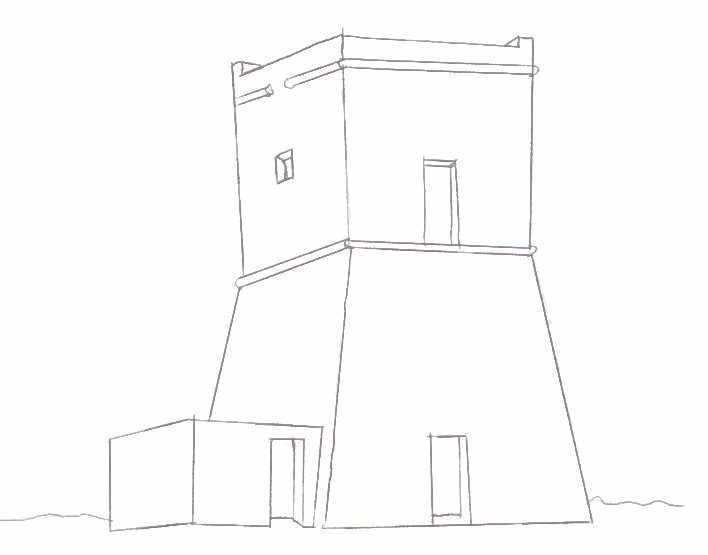
Drawing showing Għajn Tuffieħa watch-tower.

Grand Master Jean Paul Lascaris Castellar.
In Spain too the fortifications were modernised; in 1563 in Valencia the old towers were replaced by new ones, which had room for the artillery. In 1536, in Majorca sentinels sighted enemy vessels. This can be an indication that towers were built there too. On the other hand, by 1576, the southern-most province of Spain, Granada, had a coastal defence service, because of its proximity to Morocco, in order to defend the territory. In Sardinia too, the Spaniards built towers and fortifications.
During the early decades of the Hospitaller rule in Malta they concentrated their energies on the Grand Harbour fortifications.8 However, the Knights felt the lack of defences in the remainder of the Islands. So, the Hospitallers seeing what was happening in nearby Sicily decided in the early 17th century to start building coastal towers. The first tower to be built was Garzes Tower (1605) at Mġarr, Gozo, by Grand Master Martin Garzes, after he had left in his will a sum of money for the building of this tower.
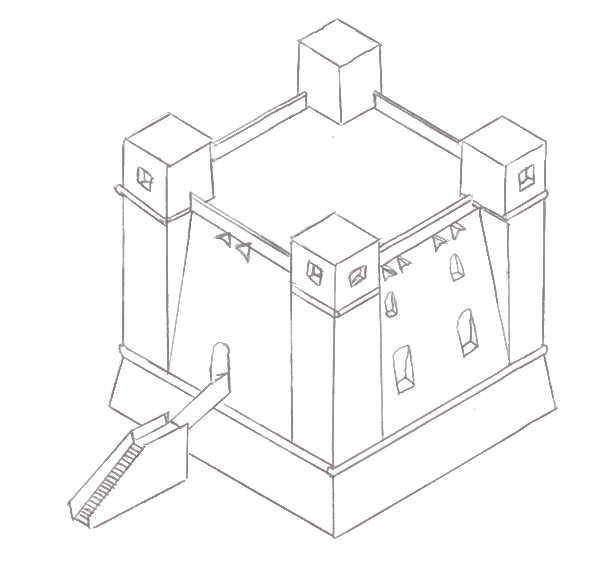
Drawing showing aerial view of Fort St. Agatha or as commonly known the Red Tower.

Grand Master Martin de Redin.
Another Grand Master who took interest in the building of coastal towers was Wignacourt, who paid for the erection of seven large towers himself. These were St. Paul’s Bay Tower (1609) at St. Paul’s Bay, St. Lucian Tower (1610) at Marsaxlokk, St. Thomas Bay Tower (1614) at Marsascala, Marsalforn Tower (1614) at Gozo, St. Mary’s Tower (1618) at Comino Island and Santa Maria delle Grazie Tower (1620) at Xgħajra, These towers were squarish in shape and very large. These towers were built in such a position to dominate vulnerable bays. It is a probability that these towers were designed by Vittorio Cassar, the son of Girolomo Cassar.
In the mid-17th century the Hospitallers continued on this line of building new towers. In fact from 1636 to 1657 Grand Master Lascaris paid for the building of another seven towers. These were Lippija Tower (1637) at Ġnejna Bay, Qawra Point Tower (1637) at Qawra, Għajn Tuffieha Tower (1637) at Għajn Tuffieha, St. George’s Bay Tower (1637) at St. George’s Bay, Nadur Tower at Binġemma, Wied iż-Żurrieq Tower (1640’s) at Żurrieq and Fort St. Agatha/Red Tower (1648) at Mellieħa. Apart from the Red Tower all the other were small and consisted of two storeys, a flat roof and a parapet. Sometimes, on the roof a cannon was positioned there.
In 1650s Grand Master Lascaris built two more coastal towers, this time in Gozo, which were Xlendi Tower (1650) at Xlendi and Dwejra Tower (1652) at Dwejra.
The next Grand Master who took interest in erecting coastal towers was Martino de Redin, who from 1658-61 built thirteen towers around the island. These were Għajn Ħadid Tower (1658) at Mellieħa, Għallis Tower (1658) at Għallis, Qalet Marku (1658) at Qalet Marku, Madliena Tower (1658) at Madliena, St. Julians Tower (1658) at St. Julians’, L-Aħrax Tower (1658) at Mellieħa, Bengħisa Tower (1659) at Bengħisa, Triq il-Wiesgħa Tower (1659), Xrob l-Għagin Tower (1659) in Marsascala, Delimara Tower (1659)in Delimara, Żonqor Point Tower (1659) at Marsascala, Wardija Tower (1659), Ħamrija Tower (1659) and Mġarr ix-Xini Tower in Gozo.
Unfortunately, after the death of Grand Master de Redin the enthusiasm for building new towers died out and by the late 17th century these fortifications were in a bad state. So, the Universita of Mdina was instructed to repair them. It is interesting to note that the large majority of these towers were built in places previously existed watch-posts. Therefore, the building of these towers was seen as to augment the coastal defences.
It was only in the early 18th century that new interest in coastal defences appears which resulted in the construction of coastal batteries, coastal redoubts and coastal entrenchments. But that is another story…
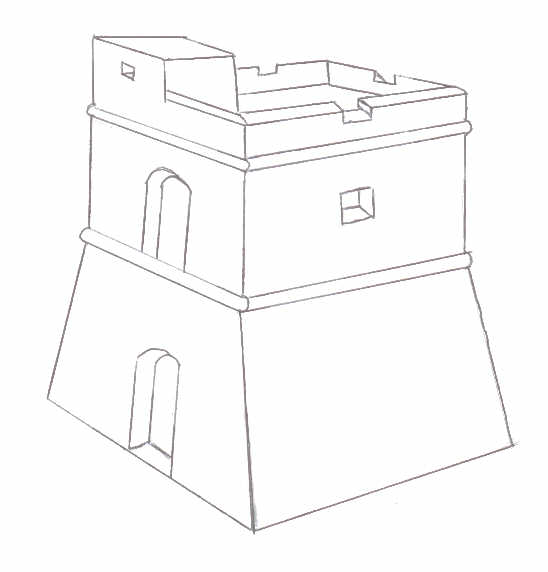
Drawing showing a typical De Redin coastal tower.